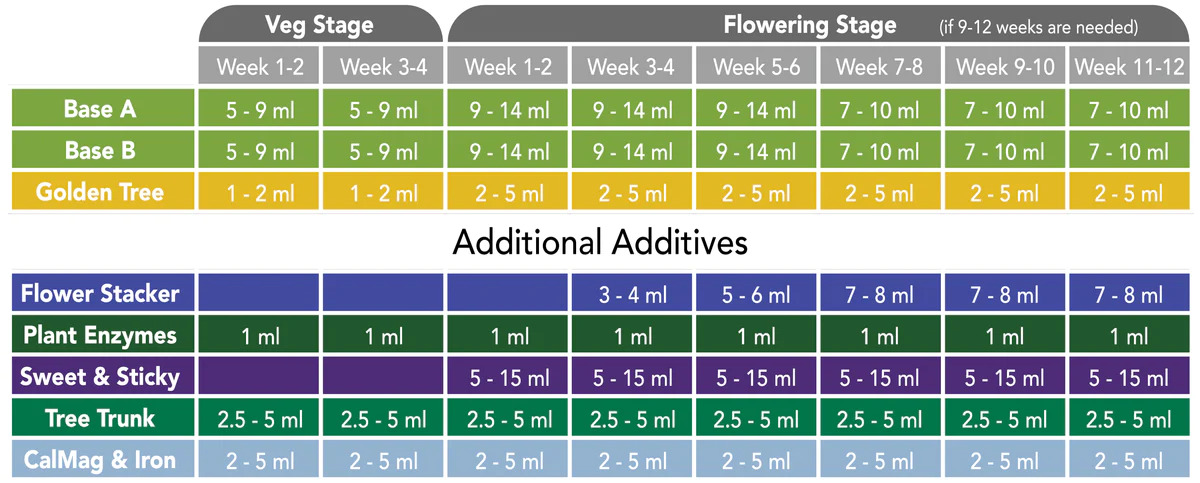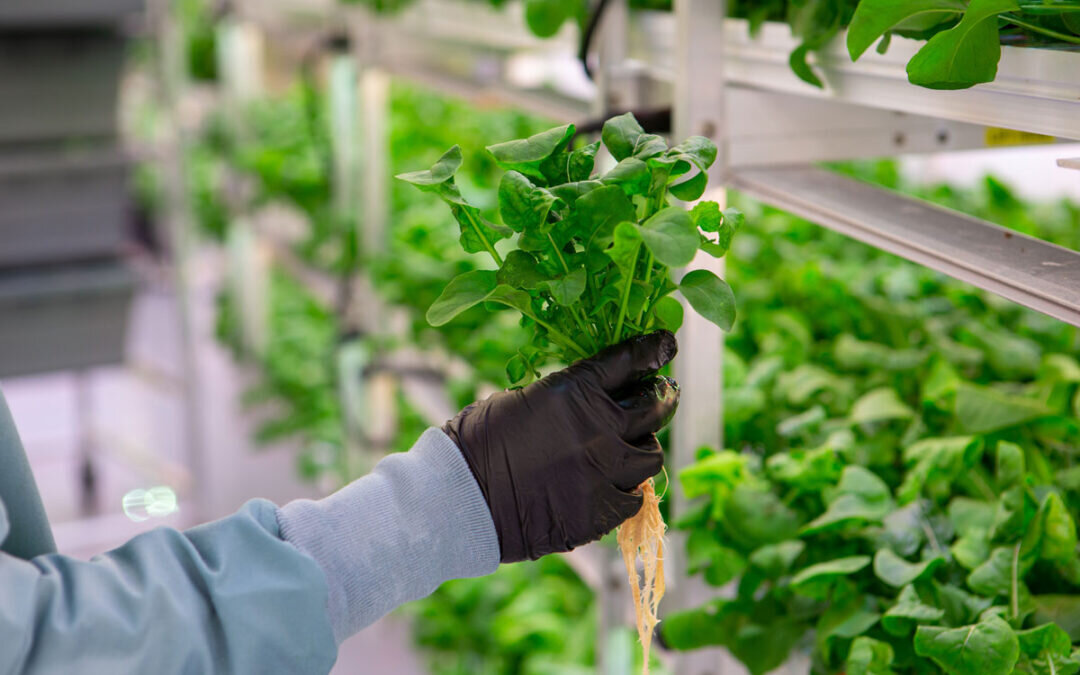How To Use A Hydroponic Nutrients Chart
Growing hydroponic plants is an incredibly rewarding experience that can easily be achieved with the proper care and monitoring. One of the most important considerations comes in the form of nutrient dosages, which can be tricky to get just right.
To help keep your plants healthy and well-fertilized, it’s important to use a hydroponic nutrient chart. This chart will provide exact measurements for each type of nutrient needed throughout different growth stages and according to the type of hydroponic system at hand.
A feed chart allows you to measure exactly how much nutrients should obtained throughout each phase of the plant’s life cycle. It also ensures that your plants have all their necessary nutritional needs met so they can reach their fullest potential yields.
A Guide to Hydroponic Feeding Schedules
Hydroponic feeding schedules are essential for successfully growing plants indoors and out of soil. Every plant is unique, so the amount and type of nutrients needed can vary from species to species. To help keep track of nutrient requirements, hydroponic growers use feed charts that provide an at-a-glance look at when and where nutrient solutions should be applied.
These charts provide guidance on how much and how often a particular nutrient solution should be used to ensure healthy growth without risking any development issues. It is important to not overfeed plants, as too many nutrients can cause them to grow too rapidly but with underdeveloped flowers as a result.
On the other hand, if there isn't enough nutrition available, plants will wilt quickly, turn yellow, their growth will be stunted or in extreme cases die if not treated in time.
That’s why it’s critical for commercial growers to administer just the right amounts of nutrients to their plants according to the specifications outlined by their feed chart.
How to Read a Plant Feed Chart
Plant feed charts are vital for ensuring healthy crop growth. They provide guidance on the timing and amounts of specific nutrients for different stages of a plant’s life cycle. Read through the chart carefully to ensure that you understand what each entry means, as well as which plants need the instructions provided.
Feed charts are typically broken into grids of nutrients and timelines, with instructions often listed weekly or bi-weekly. For instance, if you’re growing plants hydroponically, a feed chart may list nutrient dosages that should be given every seven days.
When reading a plant feed chart, it is important to note the units of measure used to denote dosage sizes. The most common units include mg (milligram), g (gram) or ml (milliliters). Pay attention to whether a nutrient dosage refers to the amount consumed per plant, per liter of water, or by other measurements.
Keeping careful record of your feeds can help you become more successful with gardening over time by monitoring what works best in your context. By adhering to feed chart guidelines and not over feeding plants, you will likely see healthy harvests!
Plant Growth Stage Feeding Schedule
Every plant breed has different needs, and these needs can change throughout the growth process. To provide your plants with the best nutrition, knowing their feeding schedule is essential. Most plants require three distinct feeding stages during their life cycle; germination, vegetative, and flowering.
Each of these stages will require a different fertilizer combination designed to boost nutrient levels for the best performance and appearance of the plants.
Seedling Nutrient Dosage
Seedlings need a nutrient boost to help them sprout from seeds, and this can be best achieved with the right dosage of root booster. For seedlings, it is important to promote healthy root growth in order for the seedling to become established. Using 1.1mL of root booster per gallon of water is typically ideal when caring for seedlings.
This dosage allows the young plant to take up enough nutrient supplements and moisture needed for robust growth. Root boosters contain essential macronutrients like nitrogen, phosphorus, and potassium which plays an important role in promoting rapid crop development as well as increased yield potential once transplanted outdoors or into larger pots.
Flowering Nutrient Dosage
The flowering stage is one of the most important periods in a plant’s growth. During this stage, plants require high amounts of potassium and nitrogen to create beautifully vibrant flowers. To maximize blooming potential during the flowering period, it is important to provide your plants with sufficient amounts of nutrients.
While nitrogen is essential for healthy growth, too much of it can stunt flower production. Therefore, only half the amount of nitrogen and phosphorus that you would normally provide with nitrogen level should be used during this time.
Potassium is equally as important as nitrogen during the flowering stage as it helps to boost flower development while encouraging fruit and seed production. Paying close attention to your nutrient levels can help lead to larger blossoms and more vibrant colors in your flowers!
It’s additionally beneficial to spray down sprinklers or mist leaves occasionally in order to encourage proper hydration and promote optimal growth conditions. By properly managing nutrient dosages, you will be able to enjoy a wonderful display of beautiful flowers that efficiently utilizes all available resources!
Vegetative Nutrient Dosage
The vegetative stage of a plant's growth is a crucial period for providing the proper nutrients. During this time, nitrogen must be drastically reduced while ensuring adequate levels of both potassium and phosphorus.
To help guide gardeners in providing the right amount of advanced nutrients for their mature plants, it is essential to know what dosages are appropriate for each element.
Nitrogen should only be given at a third of the amount administered with potassium, since too much nitrate can cause problems such as excessive Algal bloom damage or promoting nutrient deficiencies.
Additionally, it is important to evaluate water quality and climate before administering nutrients, as these factors can significantly influence the results.
As an example, in warmer climates or waters with higher salinity levels, dosage requirements may need to be adjusted due to altered rates of mineral absorption or uptake by the mature plants.
Depending on the specific environment and plant attributes, charts may be customized over time to develop nutrient ratios that provide optimal growth conditions.
Adjusting pH for a Hydroponic Nutrient Chart
For a hydroponic grower, it is essential to adjust the pH of the nutrient solution supplied to their plants. It is important to understand that certain plant species and conditions may require different levels of nutrient strength in order to obtain optimal growth patterns.
A feed chart and manufacturer provide basic guidelines, but these may be altered depending on environmental factors such as light or amount of water available.
When changing any aspect of the lighting and nutrients from what was previously provided, a grower should make changes in their feeding schedule accordingly.
pH Measurements for Plant Food
When it comes to providing the best nutrition for your plants, maintaining a balanced pH level in their nutrient solution is absolutely vital. Plants generally prefer an environment with a pH between 6 and 7, as anything lower can become too acidic and result in stunted growth or plant death.
Likewise, if the pH rises too high into an alkaline range, the essential nutrients may become inaccessible to your plants. Utilizing a reliable and accurate pH meter is important in determining precisely what levels you need to maintain.
Accurately measuring your nutrient solution’s pH allows you to ensure that optimal growing conditions are being provided for your plants. This element of balance is crucial as it pertains to allowing them to absorb the necessary elements they need to thrive.
Without this equilibrium present, it becomes incredibly difficult for them to reach their full potential. In addition, extreme imbalances can ultimately be deadly for your crops so take precautionary measures and use a quality pH meter so you can guarantee the best chance of success.
Nutrient Deficiency vs. Nutrient Lockout
Nutrient deficiency and nutrient lockout are two important factors hydroponic growers must consider when adjusting their feeding schedules. Nutrient deficiency occurs when the plant is unable to uptake essential plant nutrients due to a low soil pH or an inadequate supply of certain nutrients.
Without proper nutrition, a plant’s growth and development can be significantly stunted because it is missing key minerals it needs to stay healthy. Symptoms of a advanced nutrient deficiency include yellowing leaves, reduced flower size, decreased yields and wilting plants.
On the other hand, nutrient lockout happens when the soil pH is too high or too low for the uptake of particular elements. If the soil becomes too acidic or alkaline, it creates conditions where essential range of nutrients become unavailable to plants— even if they are present in soil or solution.
Symptoms of nutrient lockout include yellowed leaves that don’t respond to fertilizer application or changes in pH (both positive and negative). Nutrient lockout has longer lasting effects than nutrient deficiency as multiple costly amendments may be required before normal growth resumes again.
Additional Tips for Better Plant Feeding
One of the most important tips for better plant feeding is to ensure a smooth flow of filtered water. This is crucial for avoiding over-watering and lowering the risk of contamination from micronutrients, which could lead to nutrient deficiencies in plants. Filtering the water also helps to maintain stability in the pH levels—which should be checked periodically during feeding and adjusted as needed.
Another important tip for successful plant feeding is to read the manufacturer's instructions on the nutrient packaging before mixing solutions. Different nutrients, depending on their composition, require different solutions and mixing directions in order to provide plants with all their necessary vitamins and minerals.
Additionally, beginners may find it simpler to start with plants that have passed seedling stage, this ensures that they will be easier to cultivate and requires less attention than growing from seeds or cuttings.
Lastly, ensure your plants are getting at least six hours of grow light daily, this will help them photosynthesize properly, which is essential for good health of your plants.
Plant Feeding Supplies Checklist
Growing plants hydroponically requires careful consideration of nutrient levels. To ensure healthy yields and growth, a pH tester must be used to measure the acidity of the water. Nutrients are essential elements for the plants to get the nourishment they need for proper growth and development.
Epsom salts can also be added to provide extra magnesium essential for healthy foliage and root systems. Additionally, a water timer can be used to ensure that overwatering does not occur, providing automated feeding schedules when necessary.
Plant feeding supplies should always be available in any hydroponic grow setup. Without properly balancing the pH levels, nutrients, and magnesium levels in addition to being sure there is enough but not too much water, plants may not get optimal growth or yield results.
Having a checklist of these items is essential for commercial growers just getting into hydroponics as it will help them be sure they have everything on hand they need before beginning their project. With good preparation, achieving great results with their crops is easier than ever!
Purchase Hydroponic Feeding Supplies
Canada Grow Supplies has all the hydroponic equipment and supplies you need to boost plant growth development. Whether you’re a novice or expert gardener, CGS provides the products and support you need to get the best results.
Our team of experts will help make sure that your plants are getting just the right balance of nutrition for ideal growth. Shop today for the best selection of hydroponic feeding supplies and take home the knowledge that you have provided your plants with everything they need!











